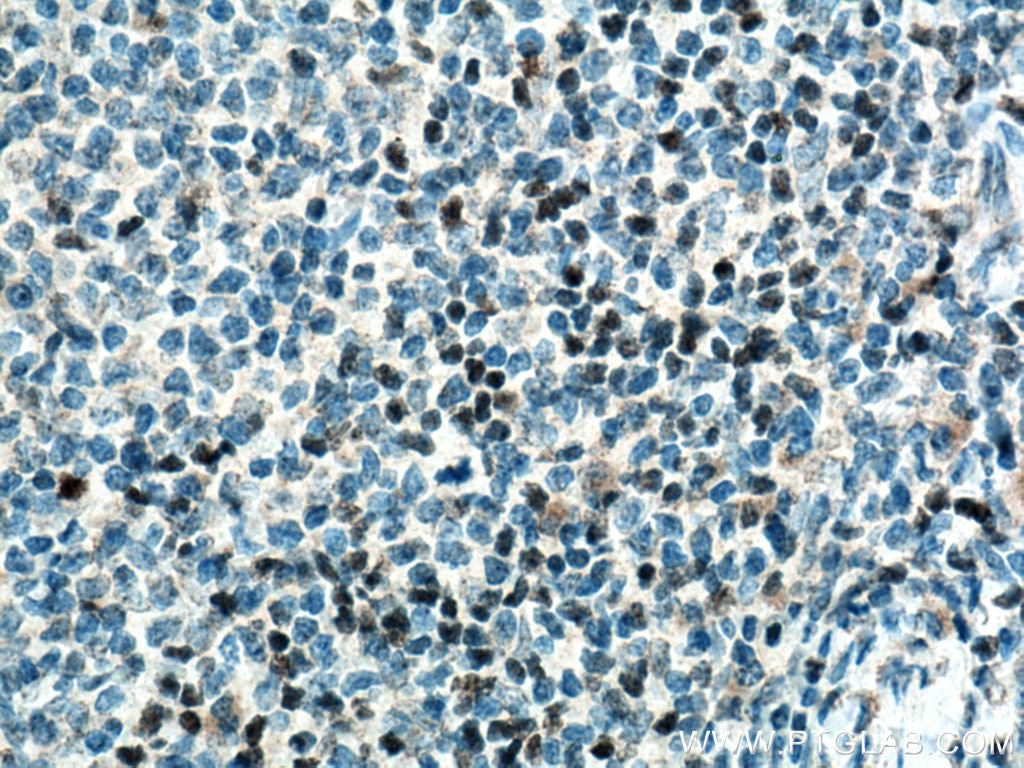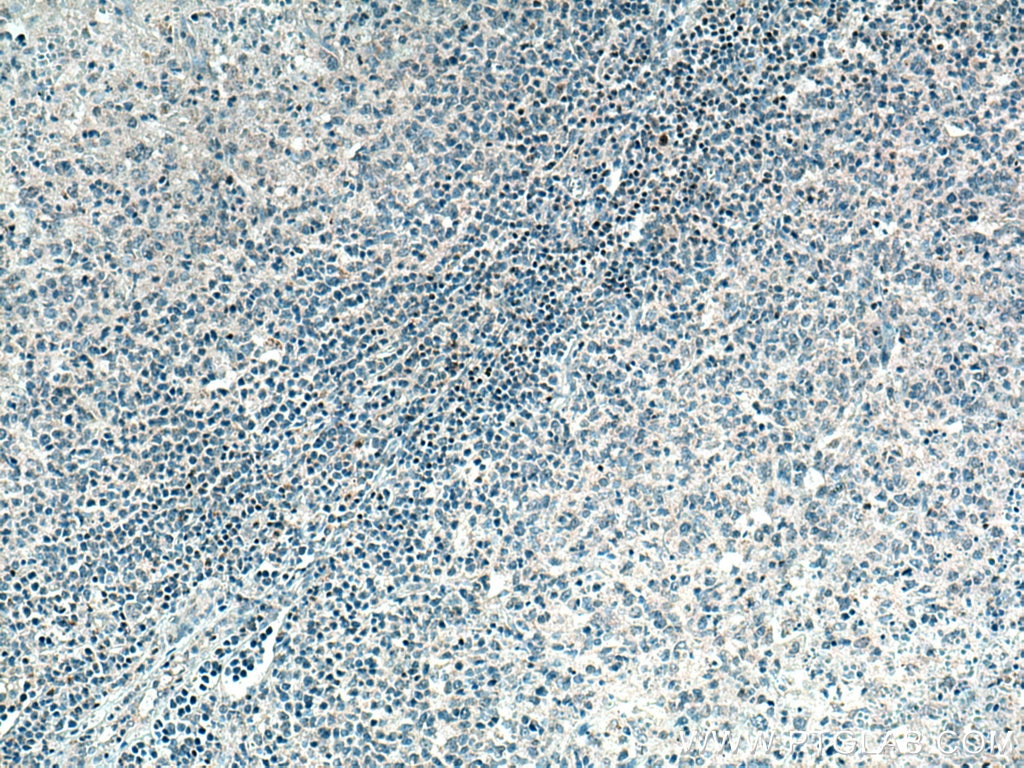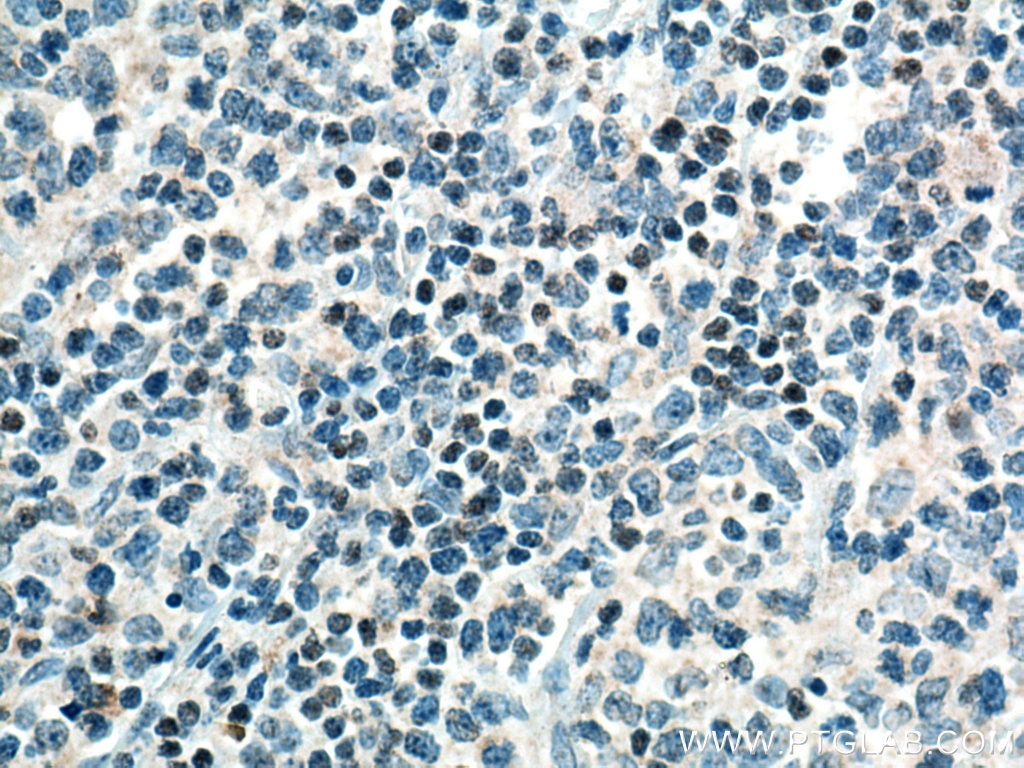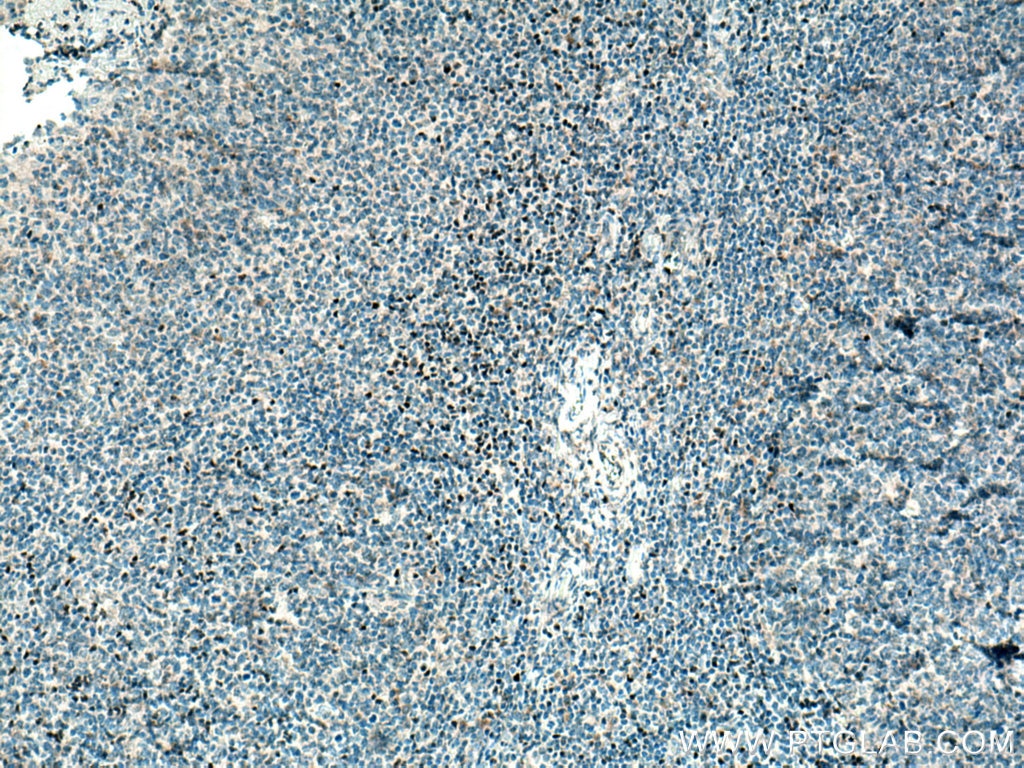- Phare
- Validé par KD/KO
Anticorps Polyclonal de lapin anti-TCF1/TCF7
TCF1/TCF7 Polyclonal Antibody for WB, IHC, IF-P, ELISA
Hôte / Isotype
Lapin / IgG
Réactivité testée
Humain, souris
Applications
WB, IHC, IF-P, IP, ELISA
Conjugaison
Non conjugué
N° de cat : 14464-1-AP
Synonymes
Galerie de données de validation
Applications testées
| Résultats positifs en WB | tissu de thymus de souris |
| Résultats positifs en IHC | tissu d'amygdalite humain, tissu de lymphome humain il est suggéré de démasquer l'antigène avec un tampon de TE buffer pH 9.0; (*) À défaut, 'le démasquage de l'antigène peut être 'effectué avec un tampon citrate pH 6,0. |
| Résultats positifs en IF-P | tissu splénique de souris, |
Dilution recommandée
| Application | Dilution |
|---|---|
| Western Blot (WB) | WB : 1:500-1:1000 |
| Immunohistochimie (IHC) | IHC : 1:50-1:500 |
| Immunofluorescence (IF)-P | IF-P : 1:50-1:500 |
| It is recommended that this reagent should be titrated in each testing system to obtain optimal results. | |
| Sample-dependent, check data in validation data gallery | |
Applications publiées
| KD/KO | See 1 publications below |
| WB | See 20 publications below |
| IHC | See 5 publications below |
| IP | See 1 publications below |
Informations sur le produit
14464-1-AP cible TCF1/TCF7 dans les applications de WB, IHC, IF-P, IP, ELISA et montre une réactivité avec des échantillons Humain, souris
| Réactivité | Humain, souris |
| Réactivité citée | Humain, souris |
| Hôte / Isotype | Lapin / IgG |
| Clonalité | Polyclonal |
| Type | Anticorps |
| Immunogène | TCF1/TCF7 Protéine recombinante Ag5792 |
| Nom complet | transcription factor 7 (T-cell specific, HMG-box) |
| Masse moléculaire calculée | 42 kDa |
| Poids moléculaire observé | 43 kDa |
| Numéro d’acquisition GenBank | BC048769 |
| Symbole du gène | TCF1/TCF7 |
| Identification du gène (NCBI) | 6932 |
| Conjugaison | Non conjugué |
| Forme | Liquide |
| Méthode de purification | Purification par affinité contre l'antigène |
| Tampon de stockage | PBS with 0.02% sodium azide and 50% glycerol |
| Conditions de stockage | Stocker à -20°C. Stable pendant un an après l'expédition. L'aliquotage n'est pas nécessaire pour le stockage à -20oC Les 20ul contiennent 0,1% de BSA. |
Informations générales
TCF7, also known as TCF1, belongs to the TCF/LEF family. TCF7 is part of the Wnt signaling pathway and plays an important role in the differentiation and self-renewal of memory T cells. It has been found that TCF7 is necessary to revive T cells in response to PD-1 blockade against viral infection or cancer. TCF7 is mainly expressed in T-cells and is also detected in proliferating intestinal epithelial cells and in the basal epithelial cells of mammary gland epithelium. TCF7 has 16 isoforms with the molecular mass of 28-54 kDa (PMID: 34044317).
Protocole
| Product Specific Protocols | |
|---|---|
| WB protocol for TCF1/TCF7 antibody 14464-1-AP | Download protocol |
| IHC protocol for TCF1/TCF7 antibody 14464-1-AP | Download protocol |
| IF protocol for TCF1/TCF7 antibody 14464-1-AP | Download protocol |
| Standard Protocols | |
|---|---|
| Click here to view our Standard Protocols |
Publications
| Species | Application | Title |
|---|---|---|
Cell Mol Immunol TRIM27 maintains gut homeostasis by promoting intestinal stem cell self-renewal | ||
Clin Cancer Res Single-Cell Analyses Reveal Mechanisms of Cancer Stem Cell Maintenance and Epithelial-Mesenchymal Transition in Recurrent Bladder Cancer.
| ||
Int J Biol Macromol Correlation between TCF7 and bladder cancer and feasibility of Erlotinib targeting in bladder cancer: Molecular mechanism and expression of TCF7 recombinant protein | ||
Clin Transl Med Long noncoding RNA LINC01606 protects colon cancer cells from ferroptotic cell death and promotes stemness by SCD1-Wnt/β-catenin-TFE3 feedback loop signalling. | ||
iScience Suppression of preadipocyte determination by SOX4 limits white adipocyte hyperplasia in obesity | ||
J Transl Med Forkhead Box S1 mediates epithelial-mesenchymal transition through the Wnt/β-catenin signaling pathway to regulate colorectal cancer progression. |








